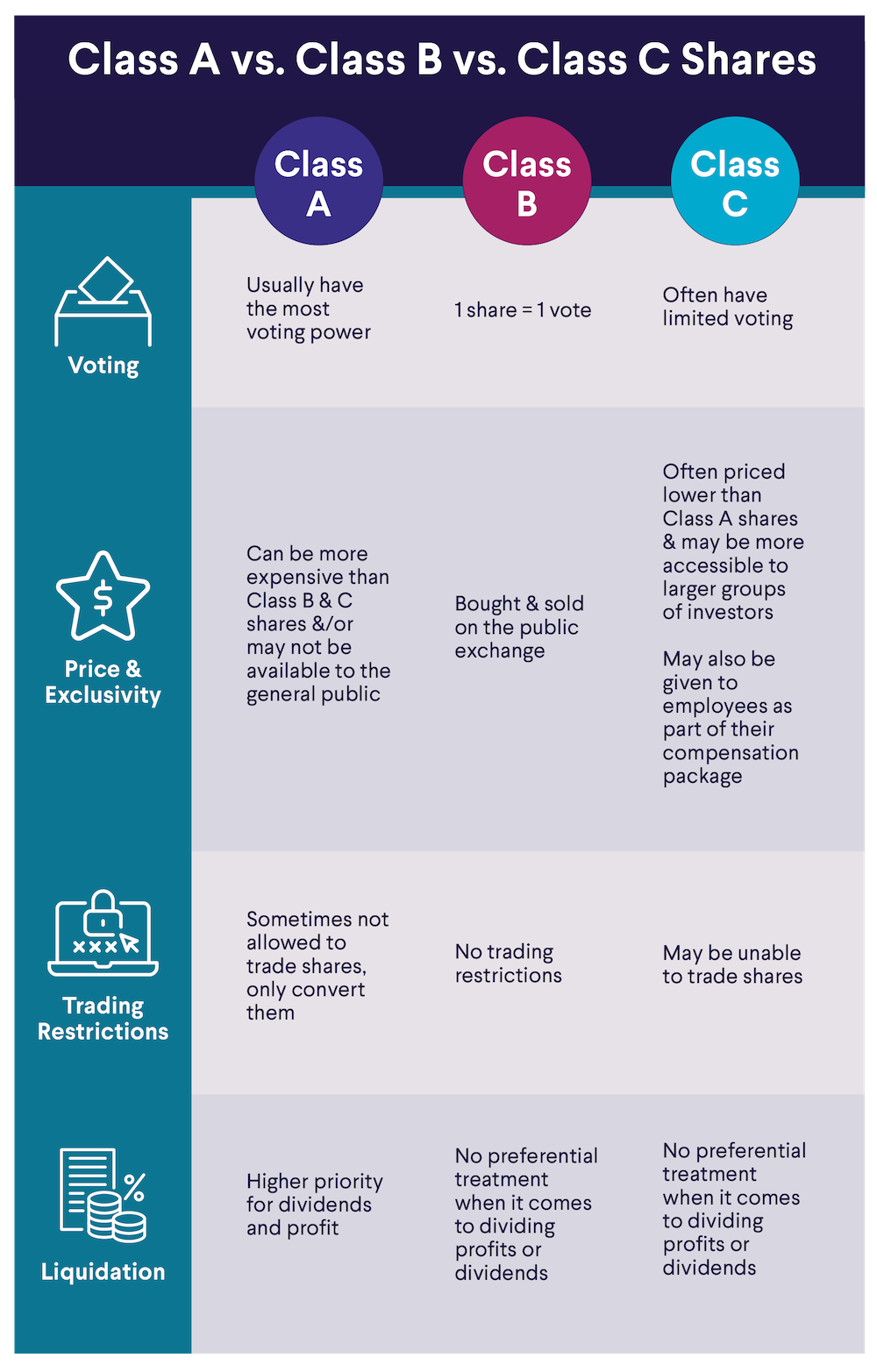What is stocks classes (class a, b and c)
In the context of investing, stocks often have different classes, commonly denoted as Class A, Class B, and Class C. These different classes typically represent different rights and privileges associated with the ownership of the stock. However, it's important to note that the specific characteristics of stock classes can vary between companies, and there is no universal standard for these designations. Nevertheless, I'll provide you with a general overview of how stock classes are commonly structured:
1. Class A Stock: Class A shares usually represent the primary or original class of stock offered by a company during its initial public offering (IPO). Class A shares typically carry more voting rights per share compared to other classes of stock. This means that Class A shareholders have a greater influence on the company's decision-making processes, such as electing board members or approving major corporate actions.
2. Class B Stock: Class B shares often have fewer voting rights than Class A shares. They are usually issued as a means for company founders, insiders, or large institutional investors to retain control over the company while raising capital through the sale of stock. Class B shares may also have certain protective provisions, such as the ability to convert into multiple Class A shares or special dividend rights.
3. Class C Stock: Class C shares typically have the fewest voting rights among the different stock classes. These shares are often created by companies to raise additional capital without diluting the voting power of existing shareholders significantly. Class C shares are commonly used for employee stock options or as a way to issue shares for acquisitions or other corporate purposes.
It's worth noting that the specific rights and privileges associated with each stock class can vary significantly between companies. Therefore, it's crucial to review a company's specific stock structure and associated documentation, such as its articles of incorporation or prospectus, to understand the exact characteristics of each class of stock.

